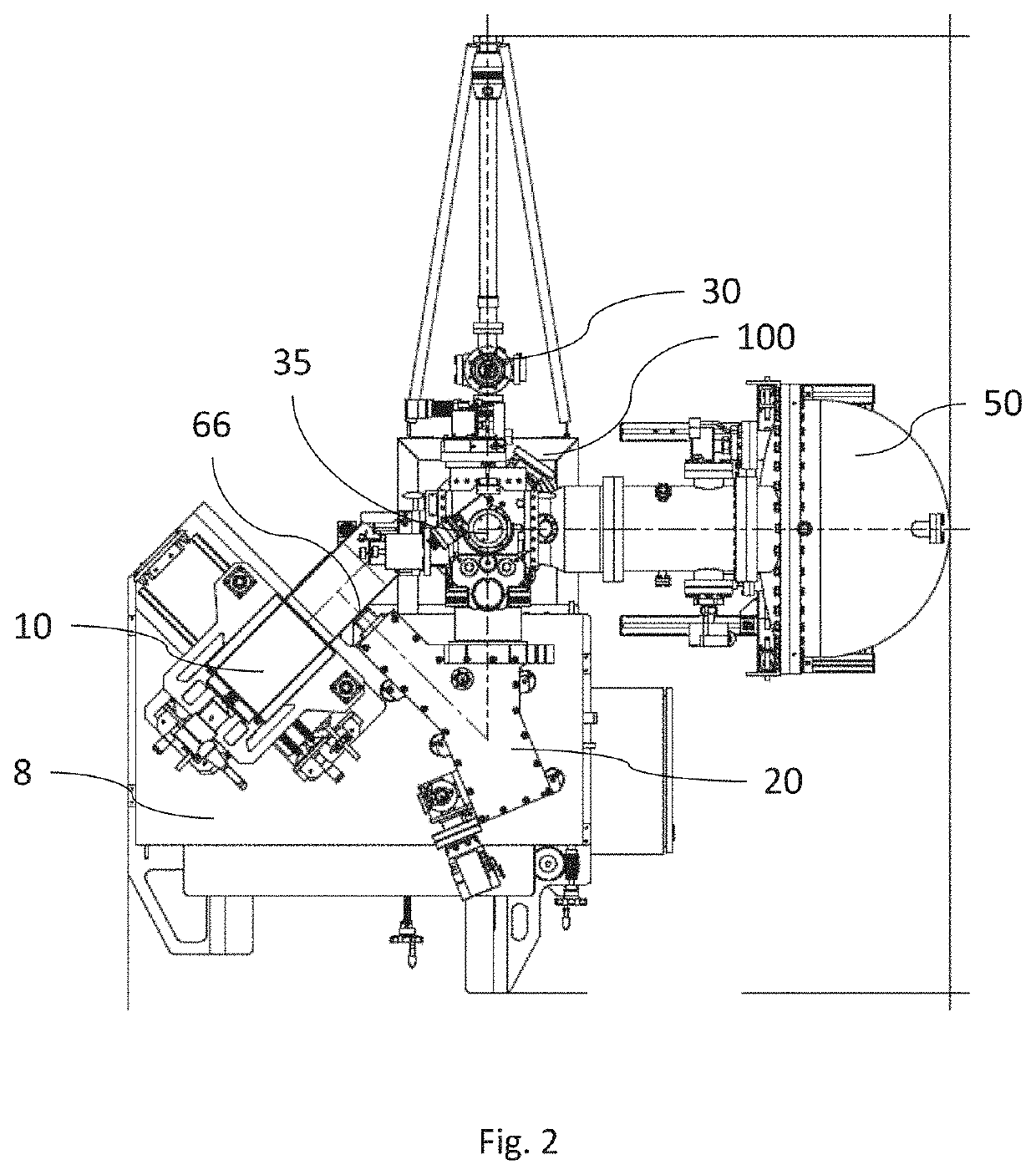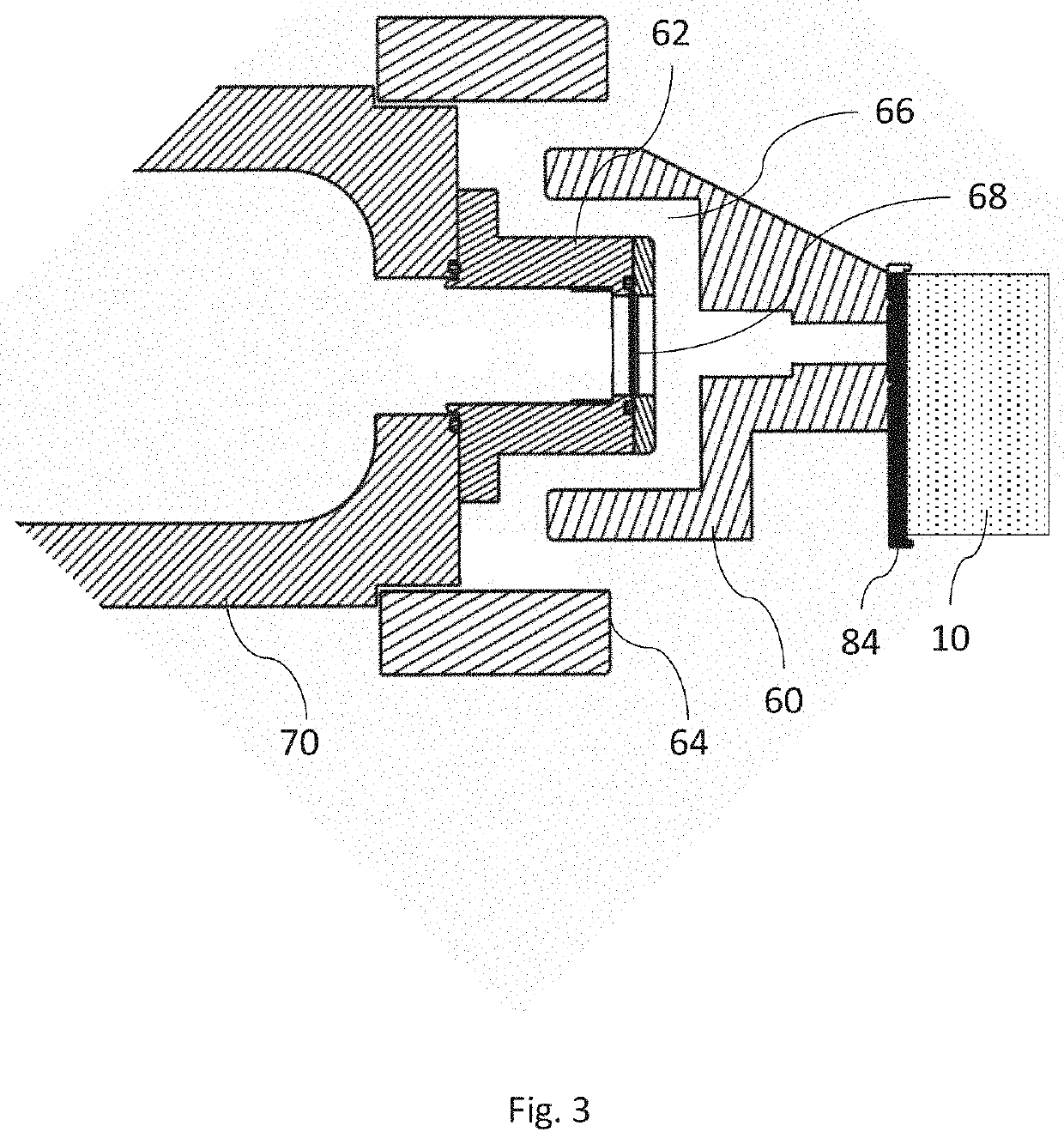Hard x-ray photoelectron spectroscopy arrangement and system
a technology of photoelectron spectroscopy and arrangement, which is applied in the direction of measuring devices, instruments, electric discharge tubes, etc., can solve the problems of reducing the amount of output and development efforts of the haxpes technique, reducing the risk of x-ray radiation leakage, and reducing the number of primary fields. , the effect of facilitating excellent conditions
- Summary
- Abstract
- Description
- Claims
- Application Information
AI Technical Summary
Benefits of technology
Problems solved by technology
Method used
Image
Examples
Embodiment Construction
[0033]FIGS. 1 and 2 respectively show a front and a top side overview of a laboratory-based HAXPES system prototype, the system places on a base 100. Some features are best seen from the front perspective, and some are best seen from the top perspective. The features shown include a pumping system 2, which is connected to a control system, a radiation safety system and tables 8 for adjustments in three dimensions of an X-ray source 10. The X-ray source illuminates an X-ray monochromator 20 from which the monochromated X-ray beam is directed onto a sample, which was introduced into the vacuum system via the load lock 30. A manipulator 35 is provided with XYZ and ±180° rotation, and preferably also heating capability, and a camera system 40 is provided for precise orientation and sample navigation.
[0034]The above mentioned parts are connected to the analysis vacuum chamber 45, in which the sample is located during analysis. An electron analyser is provided, preferably of the hemispher...
PUM
| Property | Measurement | Unit |
|---|---|---|
| radius | aaaaa | aaaaa |
| radius | aaaaa | aaaaa |
| photon energy | aaaaa | aaaaa |
Abstract
Description
Claims
Application Information
 Login to View More
Login to View More - R&D
- Intellectual Property
- Life Sciences
- Materials
- Tech Scout
- Unparalleled Data Quality
- Higher Quality Content
- 60% Fewer Hallucinations
Browse by: Latest US Patents, China's latest patents, Technical Efficacy Thesaurus, Application Domain, Technology Topic, Popular Technical Reports.
© 2025 PatSnap. All rights reserved.Legal|Privacy policy|Modern Slavery Act Transparency Statement|Sitemap|About US| Contact US: help@patsnap.com



